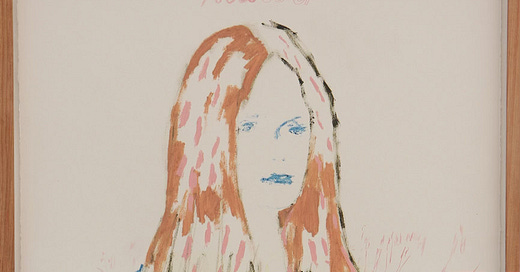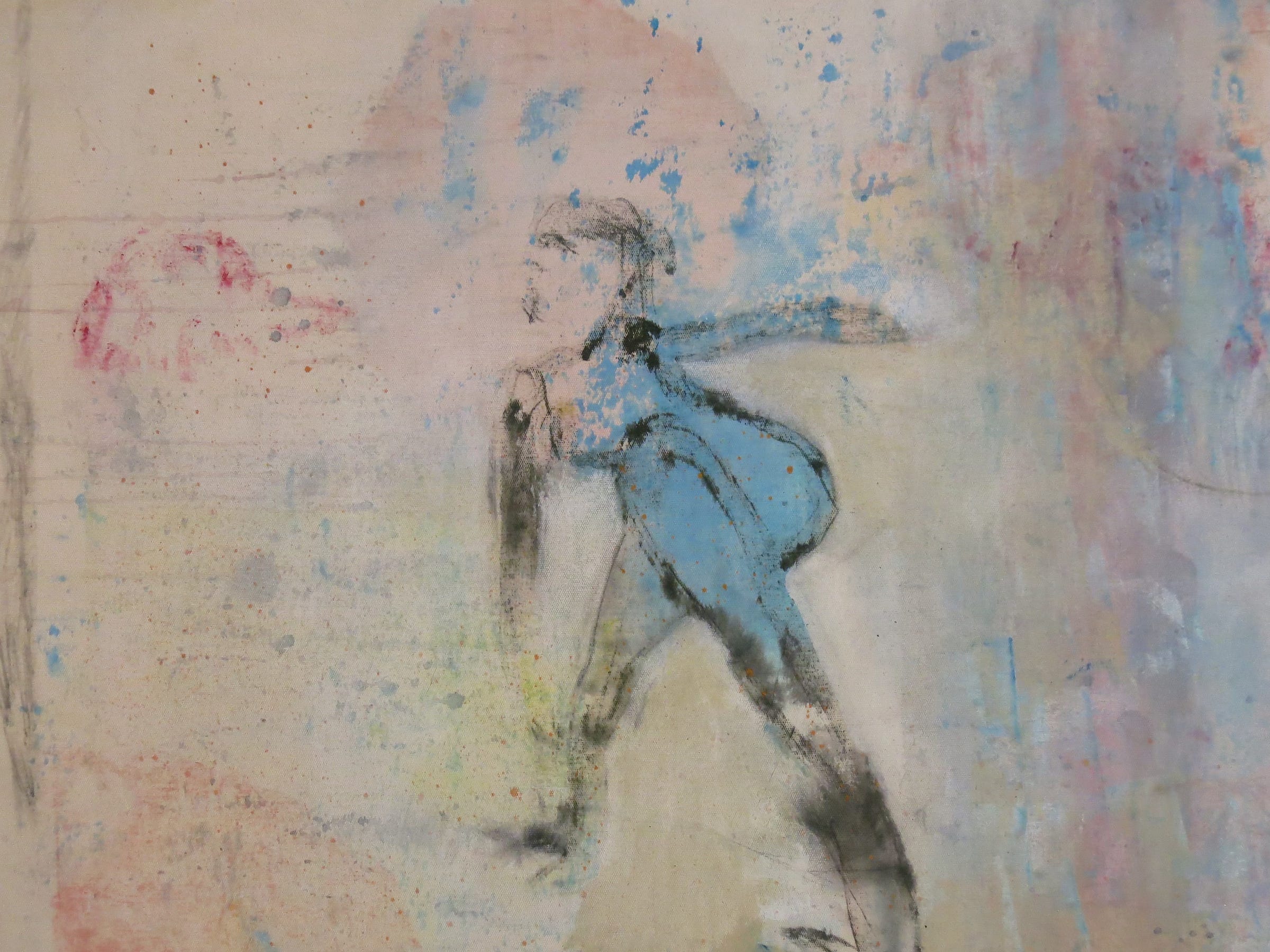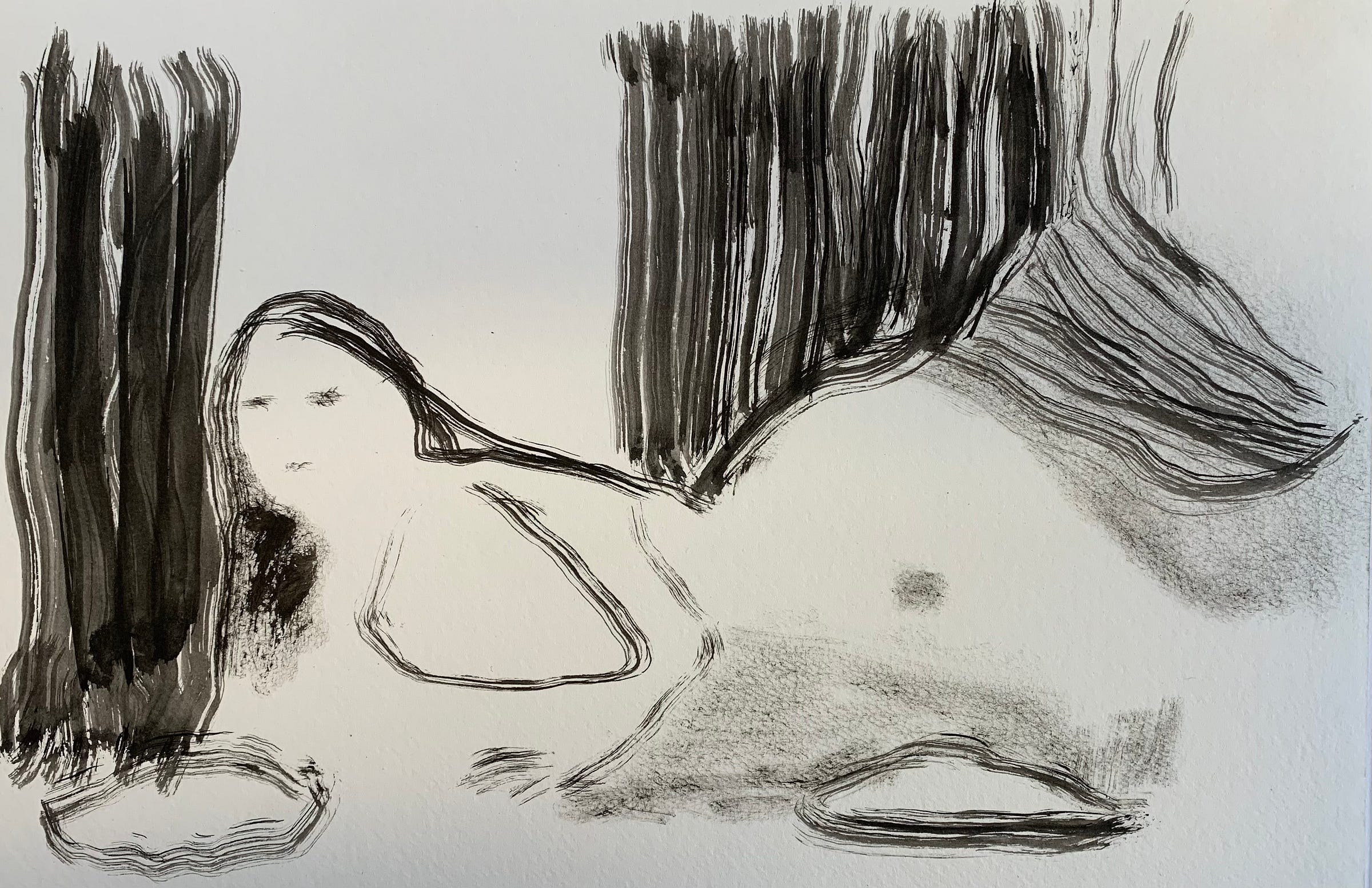If you are a regular or have just discovered Tarantula: Authors and Art, welcome. Our March inspiration is the South African artist Craig Smith. Inspired by Smith’s abstract paintings with loose lines hardly distinguishing subjects, our writer Lidia Oshlyansky considered how she may use labels as an agency to uncover her own identity. If a friend forwarded you this article, welcome; if you like it, share it or why not subscribe?
“Who am I?” It’s a simple question, yet it often leaves me grappling with how best to respond. This seemingly innocuous query has spurred countless reflections on how we form our narratives and the labels we use to define ourselves. A convergence of events recently brought these musings into sharper focus.
The first was a conversation about the ways we define ourselves versus how others define us. I was kindly challenged to put my own narrative together, rather than allowing others to form those narratives for me - something I’ve been trying to put into practice. Shortly after, I came across an interview with artist Craig Smith, whose interplay of color, line, and hints of figures invites viewers to create their own stories. It struck me how similar this is to crafting personal identity. We, too, select the brushstrokes and colors of our lives, assembling a narrative that feels uniquely our own.
But what holds these stories together? Labels.
Labels are on everything and everywhere. They create the narrative fabric around us. We are even encouraged to read the fine print on labels to make ourselves aware of the “true” ingredients, origins, side effects, intended effects etc.
Fat Free
Diary Free
Made in ----
May cause ----
Long lasting
Fast acting
99% effective
Best before ----
Caution hot liquid
We do something similar to ourselves. We create and place labels based on our work, our hobbies, our relationships. Some labels are given to us, others we earn through work or study, still others are wrought by circumstance. They are woven into every chapter of our lives, shaping not just how we see ourselves but also how others see us.
I remember an exercise at a management training offsite many years ago where we were asked to write down all the labels that applied to us and to read them to another person in the room. One of mine was “child/daughter.” When I shared this, my partner remarked, “That’s a label I no longer have.” He had lost both parents, and his words stayed with me. At the time, I was lucky enough to still have both of mine. Years later, after losing one parent and watching the other age, I’m painfully aware that this label is no longer a constant.
I will, of course, always be my mom’s and dad's daughter. When our parents are gone, we still carry the memory of being their child, but the immediacy of that label fades. It’s one we rarely put forward in conversation, even as it remains a deeply ingrained part of our identity. In contrast, a label I gained 12 years ago - “mother” profoundly shapes my life. That “mother” label impacts so much of my narrative that I realized some years ago that there were groups of people in my life that know me almost solely as “Jonathan’s mom.”
Labels also mark life chapters such as “teenager,” “20 something,” “middle aged.” These labels carry cultural weight, shaping not only how we see ourselves but also how we are perceived by others.“Teenager” is a label my son is eagerly taking up and whose inevitable evolution I face with just a wee bit of dread. I am “middle aged” which I firmly believe gives me license to be an occasional “grumpy middle aged lady.” That said, I also see this label as granting permission to set boundaries and speak my mind with more confidence than I might have in earlier years.
The key is agency—choosing which labels we embrace and how we weave them into our narratives. Some labels can be taken up multiple times and left behind and still others can evolve. I have been a student many times and when I first graduated university I was a “Social Worker.” I went back to university to study Computer Science and switched careers. I became a “Student” again. I shifted from “Student” to “Engineer” to “Developer.” I switched careers again and became a “Designer.” These are labels that help tell the story of what I did and still do for a living and they allow me to recount my professional journey to this point.
Similarly, I’ve chosen to embrace labels like “vegetarian” and “expat.” These are intentional markers of who I am and how I live. At the same time, I can set aside or reframe labels that feel limiting or outdated. I am not defined solely by my roles or affiliations; instead, I strive to craft a narrative that reflects my multifaceted self.
“Labeling” often has such a negative connotation, evoking fears of being boxed in or misunderstood. But what if we viewed labels as opportunities for self-expression? This doesn’t mean ignoring the labels society places upon us, but rather deciding how much weight they carry. For example, at the next school event, I might introduce myself not just as “Jonathan’s mom,” but as “Lidia—a designer, a vegetarian, and someone who loves hiking.” By doing so, I claim my own narrative, presenting a fuller picture of who I am.
What labels define you? Which ones have you chosen, and which have you outgrown? Reflect on how these labels weave into your personal story. Are there labels you’ve yet to embrace, or others you’d prefer to let go?
We can all structure our stories through the labels we claim, using them to articulate the clear “I AM” that emerges from the canvas of our lives. By approaching labeling with intention, we not only shape how others see us but also deepen our understanding of ourselves.







